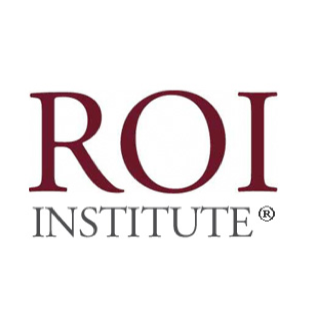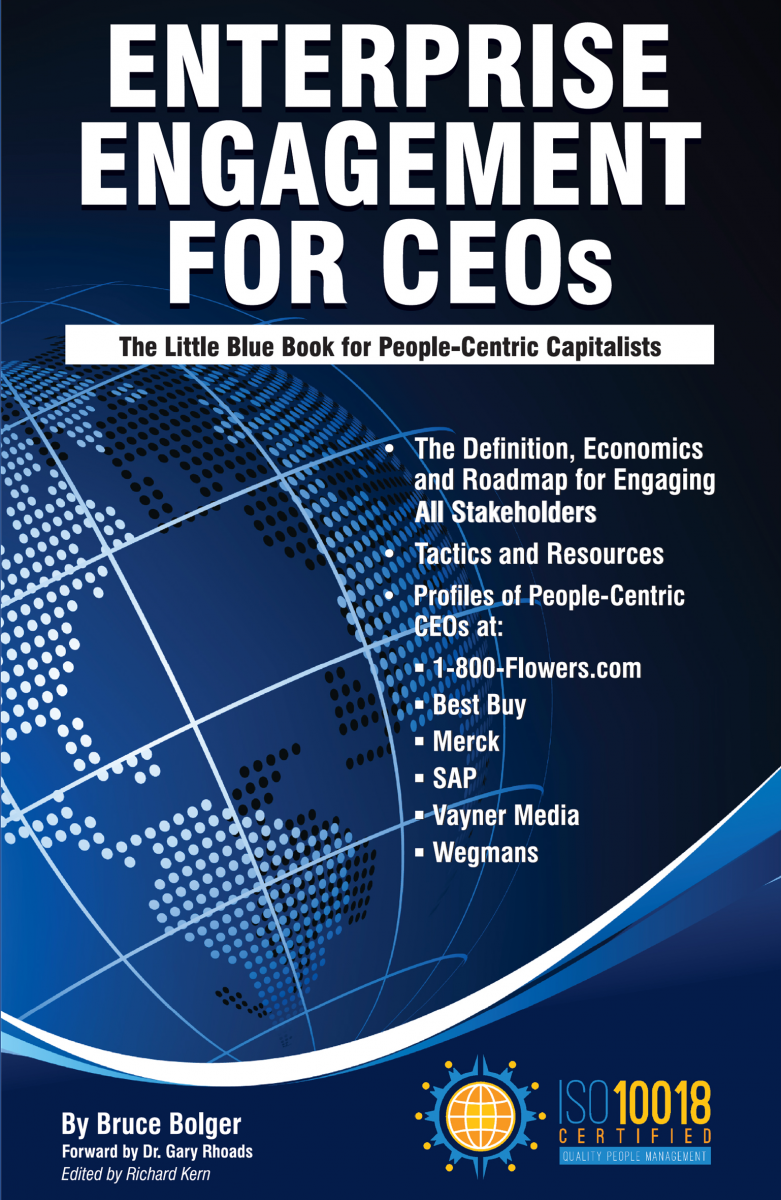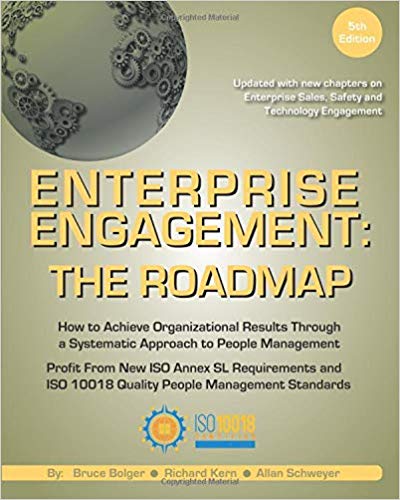Probably no organization has dedicated itself more persistently to the cause of measuring the return on investment of human resources and other people investments than ROI Institute, which now has nearly 6,000 return-on-Investment certified professionals worldwide with an active pipeline of 2,000 people in the process. ESM checked in with the founders Jack and Patti Phillips, both PhDs., to get their view on the state of human capital management and return-on-investment measurement in business and the potential impact of Covid-19 on human capital management, metrics, and measurement. They believe the pandemic is accelerating the focus on people and that it’s time to drop the “bright and shiny” activities to focus on strategic and systematic people engagement processes with return-on-investment measures.

“Many CEOs still don’t understand return-on-investment of people management,” says Jack Phillips, who founded the ROI Institute with Patti Phillips in 1992 based on his 19 years of HR and related experience at the time. “CEOs will certainly say that people are their most important asset, but they don’t always act that way. Most would say they believe in doing everything necessary to keep employees happy and satisfied, even over customer satisfaction, but I don’t think most understand what that really means so that they can effectively follow through. Understanding the connection between human capital and performance is still a mystery to many.”
The good news, according to Patti Phillips, is that “There are many HR leaders and professionals who align programs to the business and demonstrate meaningful value of those programs routinely. And, there are many CEOs who recognize it. While there is still a way to go, progress is being made with great success.” Here’s a snapshot of Jack and Patti Phillips’ view of the state of human capital management, measurement, and metrics today, based on nearly 30 years of experience educating organizations worldwide on the subject.
• The shock of the pandemic has created a new urgency in the C-suite to create new value from the 60% or more that organizations invest each year in people, in many cases with little to no clear return on Investment.
• Many CEOs still lack a full understanding of how to benefit from a strategic and systematic approach to managing all stakeholders or of tracking and acting upon people metrics, and most are not aware that most human capital practices can be measured.
• Most organizations still lack fundamental scorecards for key human capital metrics or a means of acting on that information to drive better decisions and people processes.
• Only a small percentage of organizations apply serious return-on-investment measures to most of their human capital investments in learning, communications, incentives, loyalty, recognition. and other engagement programs.
• Many human resources executives still do not have a seat at the table when it comes to allocating organizational investment dollars, and many human resources professionals do not make a serious business case for their initiatives.
• HR professionals can play a significant role in organizational leadership if they can make a business case for their activities.
• HR was the first to have its budgets cut after the 2008 meltdown, even though HR had to bear the brunt of unpleasant consequences and conversations around layoffs and downsizing, while CFOs gained further stature as stewards of the organization’s survival and well-being.
Covid-19 Will Force a New Focus on People
Patti Phillips believes that the Covid-19 shock is accelerating a new focus on people. “Even before the pandemic, there was a growing realization of the influence human resources investment has on organization effectiveness and market performance. That’s what drove the new ISO 30414 human capital reporting standards and drives the increasing pressure on public and other companies to report on their human capital practices.” Yet, adds Jack Phillips, “Not enough companies are basing their business strategies on meaningful human capital metrics.”
To Patti Phillips, the problem involves both the CEO and HR management. “Yes, the CEO should ask the right questions about human capital strategy and measurement to compel HR to report meaningful metrics, but isn’t it the job of HR to deliver meaningful value represented by metrics compelling to the CEO? Too often, the HR focus is on activity and cost, rather than investment and results. While some CEOs might think of people as cogs in a wheel, their view is skewed based on what they are being told and what they have learned.”
With 19 years of experience in human resources before starting the ROI Institute, Jack Phillips believes that “the people who manage human resources are sometimes their own worse enemy. We still like to latch on to any new fad that comes along and just put it in the system. Recently, we have seen a big push for mindfulness programs, for example. Usually, it’s because someone read a book or thinks that everyone is doing this, so we ought to do it too. There might be a very good reason for mindfulness programs, but at some point the CEO is going to ask if the program is a good use of organizational resources. Yes, it’s a good thing to get people to slow down and enjoy the moment and do some serious focus and planning, and making sure they are in the present, but what’s the benefit to the organization and how does it fit into the overall plan?”
The irony, he notes, is that many of these bright shiny objects do address real needs and can improve productivity and lessen sick days, but the key is to connect these various tactics to the organizational objectives and make sure they work together and include a measurement and evaluation process. “We are our own worst enemies when we implement programs and processes that are not necessarily needed, that are implemented for the wrong reasons, and that are not measured. The result is the continuation of expensive, poorly measured activities that are retained simply because the manager wants to keep the budget—until new management steps in or a crisis strikes.”
Take employee engagement for example. Explains Jack Phillips, “Improving productivity, quality, absenteeism, that all sounds great, but often the story from HR is trust us and keep investing, until the CEO wants to know the ROI of that investment. That’s what HR struggles with and that’s where we come in.”
HR might argue: “Why wouldn’t you want to have employees happy? Well, happiness does not necessarily correlate with productivity. You know you can make someone happy by giving someone an extra week off, but how is that contributing to productivity? We have not found in our work a correlation between happiness and productivity, but we do see a correlation with retention.”
Jack believes that HR will once again be in the cross hairs because of the economic shock, as in the 2008 recession. “The No. 1 winner that time was the CFO. That’s the person who was seen guiding organizations out of that recession and protecting them from restoring a bloated bureaucracy. The biggest loser was the chief HR officer. These people had their budgets cut more than any other function and yet this is the department that had to deal with the aftermath.” Those organizations with people-focused CEOs using ROI-based processes that contribute to key goals will maintain spending in areas where, at other organizations, budgets will be cut.

Founded in 1992, ROI Institute describes itself as a consulting firm that works with organizations worldwide to implement ROI methodology in all fields, including human resources, human capital analytics, marketing and events, coaching, healthcare etc. It provides workshops, consulting, coaching, briefings and presentations, research, and benchmarking through a network of partners and associates in the United States and in over 70 countries with the help of over 100 ROI consultants. Nearly 16,000 have taken the training program, 6,000 of whom have received certification, with 2,000 more in the pipeline, according to the company.
For More Information
Kylie McLeod, Director of Communications
Tel. 205-678-8101
Master the Principles of Stakeholder Capitalism And Implementation Through Enterprise Engagement
Education, Certifications, and Information to Activate
Stakeholder Capitalism Available Nowhere Else
A complete learning, certification, and information program and a course syllabus for educators.
Training and Certification
Enterprise Engagement Alliance Education: Certified Engagement Practitioner; Advanced Engaged Practitioner, and Certified Engagement Solution Provider learning and certification programs on how to implement Stakeholder Capitalism principles at the tactical level.

Join the EEA to begin your certification process or see our other resources below.
THE ONLY BOOKS ON STAKEHOLDER CAPITALISM IMPLEMENTATION

Enterprise Engagement: The Roadmap 5th Edition
The first and most comprehensive book on Enterprise Engagement and the new ISO 9001 and ISO 10018 quality people management standards. Includes 36 chapters detailing how to better integrate and align engagement efforts across the enterprise. (312 pages, $36.)
OTHER RESOURCES TO ACTUALIZE STAKEHOLDER CAPITALISM
Communities: The Enterprise Engagement Alliance and Advocate and the Brand Media Coalition free resource centers offering access to the latest research, news, and case studies; discounts, promotions, referrals, and commissions, when appropriate to third-party solution providers from participating coalition solution provider members.
Enterprise Engagement Resources: EEXAdvisors.com provides the only curated online marketplace to access hundreds of solution providers in all areas of human capital management and enterprise engagement throughout the world.
Online Overview:
10-minute short course: click here for a 10-minute introduction to Enterprise Engagement and ISO standards from the Coggno.com learning platform.
Services:
• The Engagement Agency at EngagementAgency.net, offering: complete support services for employers, solution providers, and technology firms seeking to profit from formal engagement practices for themselves or their clients, including Brand and Capability audits for solution providers to make sure their products and services are up to date.
• C-Suite Advisory Service—Education of boards, investors, and C-suite executives on the economics, framework, and implementation processes of Enterprise Engagement.
• Speakers Bureau—Select the right speaker on any aspect of engagement for your next event.
• Mergers and Acquisitions. The Engagement Agency’s Mergers and Acquisition group is aware of multiple companies seeking to purchase firms in the engagement field. Contact Michael Mazer in confidence if your company is potentially for sale at 303-320-3777.
Enterprise Engagement Benchmark Tools: The Enterprise Engagement Alliance offers three tools to help organizations profit from Engagement. Click here to access the tools.
• ROI of Engagement Calculator. Use this tool to determine the potential return-on-investment of an engagement strategy.
• EE Benchmark Indicator. Confidentially benchmark your organization’s Enterprise Engagement practices against organizations and best practices.
• Compare Your Company’s Level of Engagement. Quickly compare your organization’s level of engagement to those of others based on the same criteria as the EEA’s Engaged Company Stock Index.
• Gauge Your Personal Level of Engagement. This survey, donated by Horsepower, enables individuals to gauge their own personal levels of engagement.
For more information, contact Bruce Bolger at Bolger@TheEEA.org, 914-591-7600, ext. 230.
 “Many CEOs still don’t understand return-on-investment of people management,” says Jack Phillips, who founded the ROI Institute with Patti Phillips in 1992 based on his 19 years of HR and related experience at the time. “CEOs will certainly say that people are their most important asset, but they don’t always act that way. Most would say they believe in doing everything necessary to keep employees happy and satisfied, even over customer satisfaction, but I don’t think most understand what that really means so that they can effectively follow through. Understanding the connection between human capital and performance is still a mystery to many.”
“Many CEOs still don’t understand return-on-investment of people management,” says Jack Phillips, who founded the ROI Institute with Patti Phillips in 1992 based on his 19 years of HR and related experience at the time. “CEOs will certainly say that people are their most important asset, but they don’t always act that way. Most would say they believe in doing everything necessary to keep employees happy and satisfied, even over customer satisfaction, but I don’t think most understand what that really means so that they can effectively follow through. Understanding the connection between human capital and performance is still a mystery to many.”  Founded in 1992, ROI Institute describes itself as a consulting firm that works with organizations worldwide to implement ROI methodology in all fields, including human resources, human capital analytics, marketing and events, coaching, healthcare etc. It provides workshops, consulting, coaching, briefings and presentations, research, and benchmarking through a network of partners and associates in the United States and in over 70 countries with the help of over 100 ROI consultants. Nearly 16,000 have taken the training program, 6,000 of whom have received certification, with 2,000 more in the pipeline, according to the company.
Founded in 1992, ROI Institute describes itself as a consulting firm that works with organizations worldwide to implement ROI methodology in all fields, including human resources, human capital analytics, marketing and events, coaching, healthcare etc. It provides workshops, consulting, coaching, briefings and presentations, research, and benchmarking through a network of partners and associates in the United States and in over 70 countries with the help of over 100 ROI consultants. Nearly 16,000 have taken the training program, 6,000 of whom have received certification, with 2,000 more in the pipeline, according to the company. 















